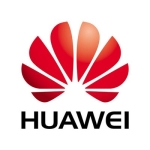What is our primary use case?
We use this solution for our wireless employee network and the wireless guest network for our clients. We have it for personal devices as well. It runs the wireless network for the company.
How has it helped my organization?
It improved our organization by lowering the cost of APs. Cisco is more expensive, and we're saving money. It helps us to utilize our funds elsewhere. It gives our employees and our clients easy-to-use internet access which makes them happy. It's a win-win all around.
The app allows me to see that we transferred 137-Gigs in the last 24 hours. I haven't had any complaints, and we can see insights into what people use the most. The metrics on the app are pretty good. We can see who uses utilities versus instant messaging, who browsed the web, streaming, and productivity, which is cool.
What is most valuable?
From start to finish, the setup is pretty simple. I've set up Ubiquiti, SonicWall, SonicPoint, and more, and this seems to be pretty much plug-and-play. For the most part, it's fairly straightforward and pretty simple to use.
I currently have it in half of our corporate offices, and I haven't heard any complaints about coverage. People can access it much more quickly. I hear positive feedback and I haven't heard any downsides. The coverage is better than expected.
We don't use the mesh, everything is hardwired directly. Each AP is directly hardwired to the switch which provides another signal. I haven't gotten into the mesh yet. That said, I don't see it being an issue.
Currently, I've seen about 75 to 80 users on 12 access points. I'm not sure exactly how many are on each access point, however, I would assume that about 10 to 12 users are on an access point. I’ve had up to 17 users at one point on one access point, and it seemed to be fine. I haven't reached its max limit of users quite yet. I'm also adding more and I haven't tested it with the max number of users.
I haven't seen a decrease in bandwidth. We went from Cisco to Aruba and we haven't seen a downgrade. As far as I know, the bandwidth is still the same.
It's super user-friendly.
If you need to remove or reset one to factory settings, you can do so if it is either online or offline. Once it gets back online, it hits the cloud and resets itself. I don't see a reason to have buttons on the APs. They're out in the open. Anybody could reach up and grab it, so it is less likely for something to happen there.
What needs improvement?
The only downside is that there are some bugs that I see.
Hardware-wise, the product is fine. Software-wise, I would like to have a way of moving APs from site to site and wish there would be a way to add more APs to one site. I know the limit is 25 APs per site and I wish there were more. I wish I could have all of my APs in one pane, rather than have multiple sites. For now, it'll do. Maybe there'll be an update in the future.
In addition, I wish I could add more admins to sites.
For how long have I used the solution?
We just implemented the solution. So far, we finished half of the implementation. We ordered 115 access points and we have about 30 in place.
What do I think about the stability of the solution?
For now, it seems pretty stable. I am not running into any issues right now. The only issue I've found is the AP lights. The AP told me that the codes and everything ran out of DHCP and I didn't have enough IPs. It's stable enough to let me know what the issue is with my network and that is pretty helpful.
What do I think about the scalability of the solution?
It's scalable, yet limited to how you scale it. The APs are limited to 25 per site, and I have 70 APs. I'm going to have at least three sites, but I wish they would all be in one. That way, I could see it and not have to manage different sites. When I set up a network, I have to set it up on each site manually and that is a downside of this solution. I don't know of a way to set up or copy a site.
There are a lot of users. There are about eight IT employees that will be managing and helping with the product. Our company numbers about 1,000 people and is growing, so there will be more than 1,000 users. That's not including the clients that come in.
How are customer service and support?
The solution comes with a one-year warranty and 90 days of phone support. I didn't realize it would come with that and I was already sold on the concept of ease of use and simplicity of it. It's a plus to know that it comes with a one-year warranty.
I haven't had any experience with technical support yet.
Which solution did I use previously and why did I switch?
We used Cisco Aironet. The other side of the company did not have any wireless network, so this is the first wireless access point they installed. We're one big company and we merged with another company, so we're bringing them up to speed. They didn't have any wireless network in their building. This is better for them and is quite new.
How was the initial setup?
In the beginning, the setup wasn't what I thought it was. After looking into it and focusing on it, it was pretty straightforward. Once I got one going, it was pretty much plug-and-play for the rest. The initial part might be challenging if you don't know much about networking. That said, anyone could figure it out even with a lack of IT knowledge. As long as you know your basic terminology in networking, know what your goal is, and how you want your network structured or wireless network structured, I'd say it's pretty simple.
The deployment is still ongoing. We're placing it in more than one county. I had 12 set up in a day or two. It didn't take long at all once I got the first going.
Right now, out of eight people, only two of us use it, set it up, and manage it. We don't need a lot of people for the setup or to manage it. Once set up, it's pretty much left alone.
What about the implementation team?
The solution was received straight from the reseller, and I installed it and set it up. I meshed it and I didn't need outside assistance.
What was our ROI?
Right now, I can't say for sure that there is an ROI. I assume it will be seen soon, as long as the product lasts. If it only lasts us three years and they don't give us any problems, then I would assume we'll see an ROI. We haven't had that many problems with APs before, until recently. When we started to switch over, our APs were going out, however, they were already out of service life and out of date.
What's my experience with pricing, setup cost, and licensing?
There is no licensing fee. There is a one-time purchase. There is no support after a certain amount of time, however, you could probably buy more support.
The price is $165 an AP. Even if something goes wrong, another $165 for a replacement wouldn't be a pain. It was a win in that sense. Plus, we don't need a license to make it work.
The cost of the solution includes everything we need to manage and upgrade our WIFI network, including the mobile management app.
The cost weighed a lot on the decision to go with this solution. It was nice not to worry about the need for a license in order for the units to work, as we had with Cisco. If you didn't have a license, then they were just a paperweight. Pricing and licensing were really big factors, and Aruba pretty much hit it out of the park.
Which other solutions did I evaluate?
We looked at Ruckus, WatchGuard, and Ubiquiti. Between simplicity, price point, and my sales rep, who was the one that said he had a good experience with Aruba, I was sold. I also liked their accessibility. All of the other APs seemed to be out of stock and on back order. We needed something fairly quick, and they had them in stock.
What other advice do I have?
I'd advise potential users to just buy the product. I do other consultant work, and I look forward to putting it in other places, due to its ease of use. It's up there with the name-brand APs, and I don't see it having an issue running with the other APs that cost three or ten times as much.
It doesn't have to be complex to run a wireless system. You've got three buttons on your app and that's what you really need.
I'd rate it an eight out of ten. I took a few points off due to the fact that the solution lacks some software.
Which deployment model are you using for this solution?
Public Cloud
Disclosure: PeerSpot contacted the reviewer to collect the review and to validate authenticity. The reviewer was referred by the vendor, but the review is not subject to editing or approval by the vendor.

















